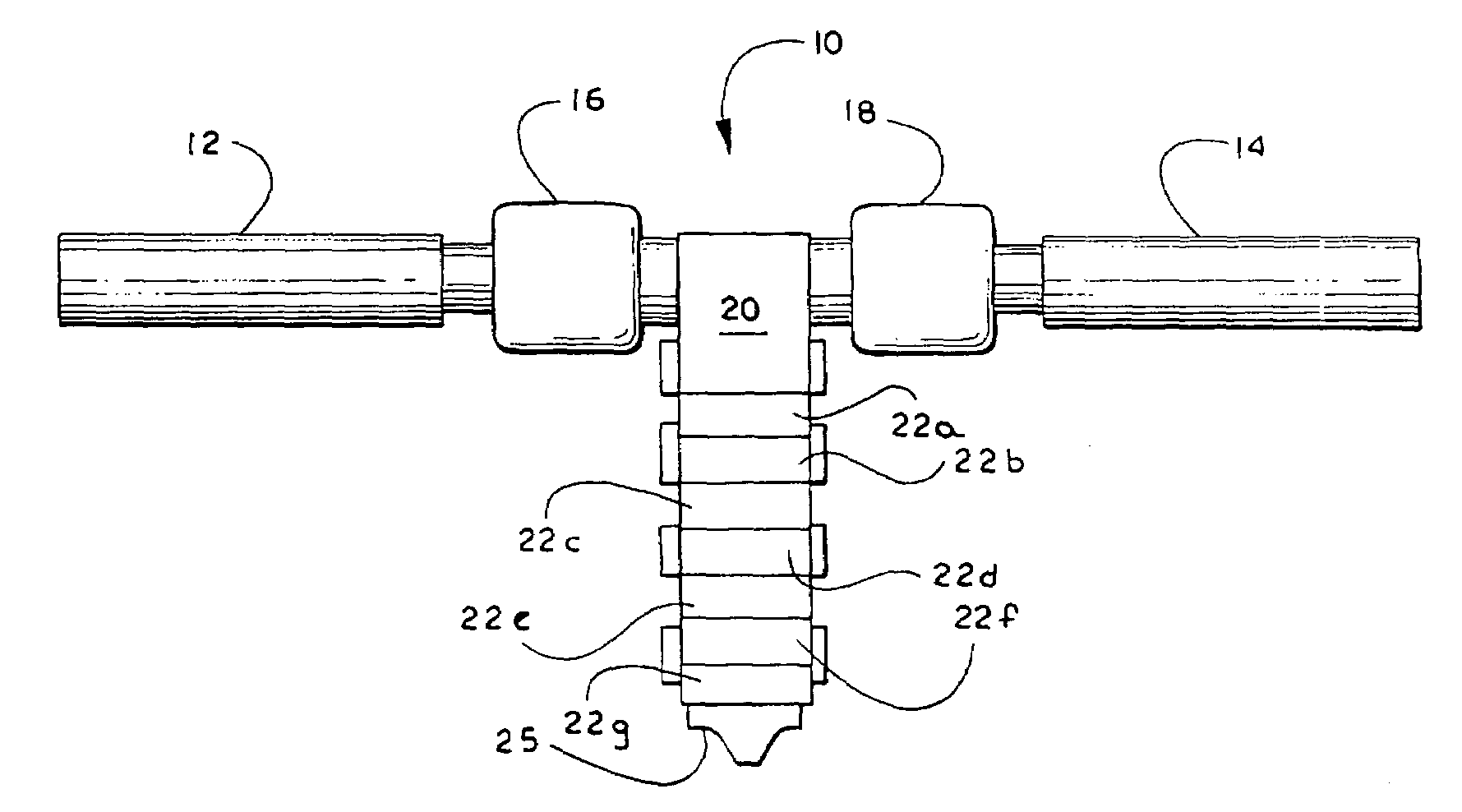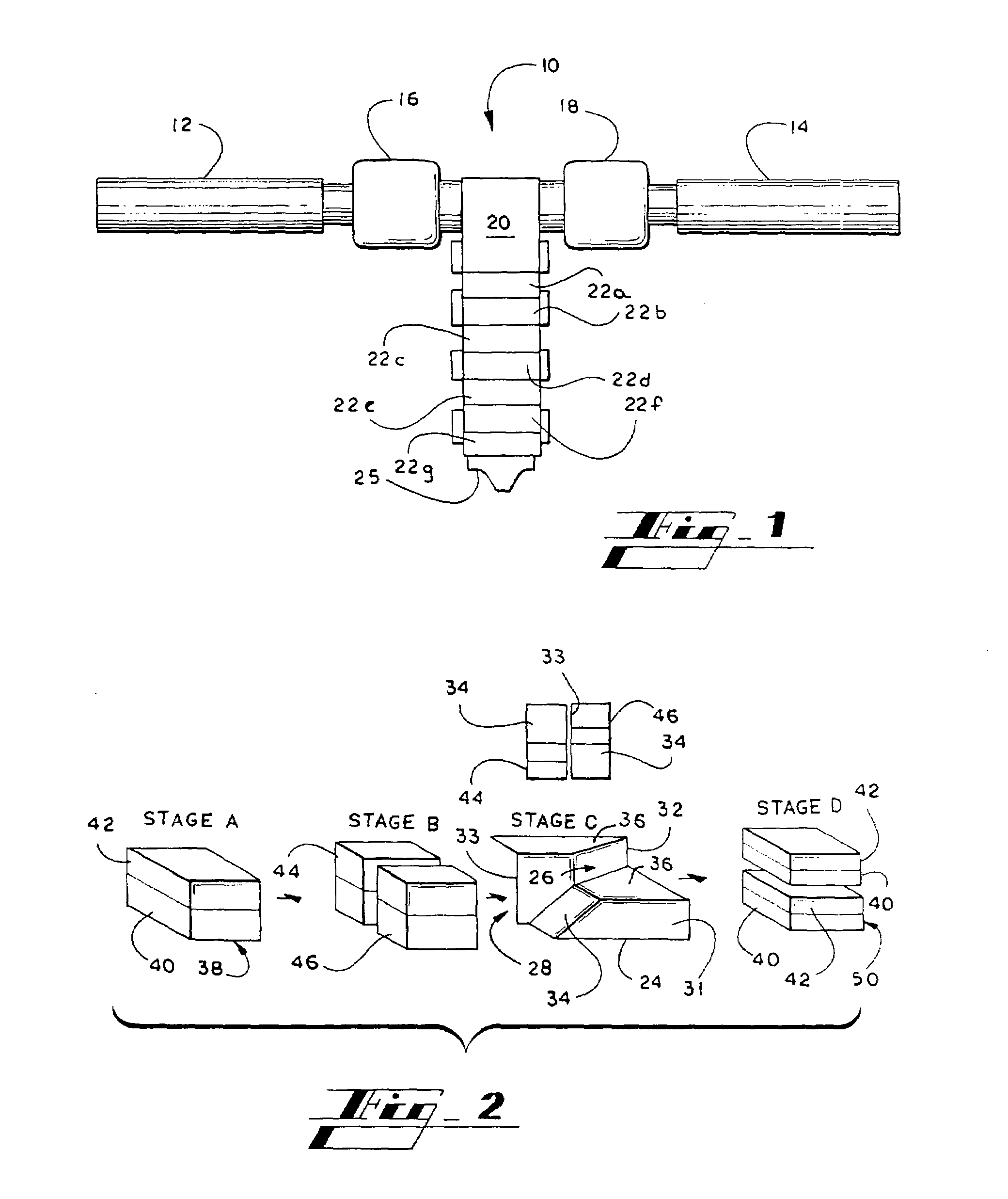Degradable breathable multilayer film with improved properties and method of making same
- Summary
- Abstract
- Description
- Claims
- Application Information
AI Technical Summary
Benefits of technology
Problems solved by technology
Method used
Image
Examples
example 1
Formation of Multilayer Films
[0054]Five and 17-layer films consisting of CaCO3 filled Eastar Bio® and Estane® polymers were created using a microlayer extrusion setup. The Eastar Bio® contained 40 wt % CaCO3, and the Estane® 58245 contained 50 wt % CaCO3. In each polymer, the CaCO3 was Omya 2SST, having an average diameter of 2 μm. The setup consisted of C. W. Brabender (S. Hackensack, N.J.) extruders, flexible high-pressure polymer hoses, a polymer melt combining block, layer multiplier dies, a Randcastle (Cedar Grove, N.J.) film die, and a chill roll.
[0055]The first stage included extruding the plastic layer and extruding the elastomeric layer. The temperature of the first extruder was maintained from about 108° C. to about 190° C. The temperature of the second extruder was maintained from about 150° C. to about 180° C. The extruded layers were then passed to a spin pump through a two-foot flexible hose and subsequent to a combining block through an eight-foot flexible hose. The h...
example 2
[0058]The tensile properties of the multilayer films were measured using a MTS Sintech tensile tester (SINTECH 1 / D) and TestWorks 4.05B software, according to ASTM test method D 882-97. A conventional 2.5 in-long “dogbone” sample was used, with the thin section measuring 18 mm long and 3 mm wide. The average thickness of each specimen was entered into the software program prior to testing. The samples were stretched until failure at a rate of 5 inch per minute. The measured tensile properties for the multilayer films of Example 1 are provided in Table 2 below.
[0059]
TABLE 2Tensile Properties of Multilayer FilmsMDCDFilm #Strain (%)Modulus (MPa)Strain (%)Modulus (MPa)111714232112429580530383639141530430345372365204354173767781489457499253237817748517449192463293710698036934111844044952121244752032132862738120148443424181597624562416239305143317128394422318283961920410020941052126968
[0060]The multilayer films all exhibited much lower moduli than the control polyethylene f...
example 3
[0061]Multilayer films from Example 1 were subjected to a plurality of stretching operations. Elasticity of the film is useful to determine the extensibility tension of the film. The multilayer films were stretched to 100 percent elongation, relaxed back to zero percent, then stretched again to 100 percent and relaxed. This stretch-relax cycle was repeated five times. During the test, the load was measured, and the load at 50 percent elongation was measured on both the first and second cycle. Preferably, a multilayer film has a load below 500 grams on the second cycle, as this indicates a low extensibility tension. In addition, the percentage set was measured. The “percentage set” means the elongation at which the load returns to zero. A more elastic material will have a very low percentage set, while a non-elastic material would have a very high percentage set. The data showed that the higher the level of elastic polyurethane, the lower the percent set. The measur...
PUM
| Property | Measurement | Unit |
|---|---|---|
| surface roughness | aaaaa | aaaaa |
| weight percent | aaaaa | aaaaa |
| mean particle size | aaaaa | aaaaa |
Abstract
Description
Claims
Application Information
 Login to View More
Login to View More - R&D
- Intellectual Property
- Life Sciences
- Materials
- Tech Scout
- Unparalleled Data Quality
- Higher Quality Content
- 60% Fewer Hallucinations
Browse by: Latest US Patents, China's latest patents, Technical Efficacy Thesaurus, Application Domain, Technology Topic, Popular Technical Reports.
© 2025 PatSnap. All rights reserved.Legal|Privacy policy|Modern Slavery Act Transparency Statement|Sitemap|About US| Contact US: help@patsnap.com


